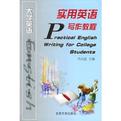实用英语写作教程
出版时间:1999-10 出版社:北京大学出版社 作者:冯启忠 编 页数:258
前言
我早就知道冯启忠、林裕音两位老师善于教书,可是只有现在才知道他们还善于编书。在细读他们合著的之后,我感到这是很好的教本。不难看出,这是他们多年英语教学心得的结晶,也是长期潜心研究专用英语(English for specific purposes)的成果。 书中介绍了十种英语写作的格式和技巧,都是很实用的。做笔记,写信,作描写文和叙述文,撰写科研论文,谁都知道这是大学生必须学会的本领;写便笺或备忘录,发电报,作广告,这也是任何公私机构的工作人员都应该懂得的业务。本书的长处在于,既体裁多样,实例齐全,又文字浅易,说理清楚。 如果问,书中哪些部分我认为最有用,我的回答是: 1.编者讲述听演讲时怎么做笔记,写科研论文时怎么搜集和挑选材料,方法具体,议论中肯。 2.各种文体都有某些常用词语,但是一般学生所知不多。编者把这些词语都编在一起,学生便可按需要选用,再无搜索枯肠,难于下笔之苦。
内容概要
本书讲实用英语写作,分为做笔记、写信、写各种短文、写科研论文以及打电报、写备忘录等等十类。每类有样本,有写作指导,有练习,还有一些供参考的答案。此书主要是为大学本科生、毕业生、研究生编写的,但也可供出国留学人员、扩研人员和一般涉外工作人员之用。
书籍目录
PART ONE Note-taking Chapter 1 Note-taking in Reading Chapter 2 Note-taking in Listening PART TWO Letter-Writing Chapter 3 Writing Personal Letters Chapter 4 Writing Business LettersPART THREE Descriptive and Narrative Writing Chapter 5 Writing Descriptions Chapter 6 Writing NarrationsPART FOUR Exposition and Research Paper Writing Chapter 7 Writing Expository Essays Chapter 8 Writing Research PapersPART FIVE Short Message Writing Chapter 9 Writing Nores and Memos Chapter 10 Writing Telegrams,Telexes and Personal AdsKey to the Writing PracticeReference Books
章节摘录
Id like today to tell you something about lectures and note-taking. Note-taking in listening is a complex activity which requires a high level of ability in many skills. When a student takes notes in a lecture he has to do four things. Firstly, the student has to understand what the lecturer says as he says it. The student cannot stop the lecture in order to look up a new word or check an unfamiliar sentence pattern. This puts the non-native speaker of English under a particularly severe strain. Often he may not be able to recognize words in speech which he understands straightaway in print. Hell also meet words in a lecture which are completely new to him. While he should, of course, try to develop the ability to infer their meaning from the context, he wont always be able to do this successfully. He must not allow failure of this kind to discourage him, however. Its often possible to understand much of a lecture by concentrating solely on those points which are most important. The second thing the student has to do is to decide whats important. But how does the student decide whats important? This is in itself another skill he must try to develop. Probably the most important piece of information in a lecture is the title itself. If this is printed beforehand, the student should write it down accurately and completely, and study it carefully. A title often implies many of the major points that will later be covered in the lecture itself. It should help the student, therefore, to decide what the main points of the lecture will be.
图书封面
评论、评分、阅读与下载
用户评论 (总计3条)
- 又是一次學校的教程!!首先是便宜!比學校買藥便宜哦!而且是正版喔!!GOOD!!處理速度快!
- 这里的太阳数目,不能表达我心中的满意。快好。很好
- 总的来说,这本书还不错。
